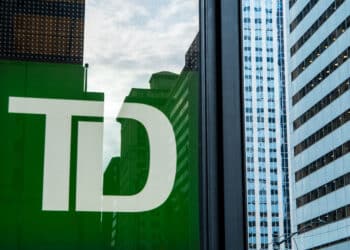Is There Any Pop in Popup Banks?

TD Bank has started to hit the road.
The bank a few weeks ago unveiled a new “mobile banking center” down in Florida, which is really a bank-in-an-RV.
TD told Bank Innovation that the mobile center has been a success and that “The Florida roll-out has shown the mobile center can ably fulfill our customers’ banking needs.”
I mention TD’s initiative because the whole idea of popups in financial services came up the other day on our LinkedIn group, and I think there is value in the popup — but perhaps not for the reason you might think. (Full disclosure: much of this post also appears on our LinkedIn group as a comment.)
Just for definition’s sake, a popup is a short-term retail outlet — usually it is in storefront, unlike TD’s. The popup stays open for a short period of time, and is intended to create marketing buzz about the brand, rather than substantial sales.
The risk in popups is that, well, no one shows up or cares. Even before you create a popup, there are several elements that need to be hashed out:
- You’ve got to pick the right location;
- Negotiate a good deal with its landlord; and
- Design a store (branch) that is cool.
And then you have to turn your attention to marketing. The whole point of a popup is to draw influencers who can be evangelists for your brand. These are the people who upon visiting your shop, snap a photo and post it on their Instagram and hopefully blog about your store? As one marketing blog put it, “you have to think of them as press. They want to know what’s hot, what’s new, what’s fresh first, just as a reporter would.” But here’s the problem: will any influencer think that a bank popup is “fresh”? Sure, if a bank can get such influencers to act on its behalf, the results are great, but I sense that precious few banks would be able to pull this off.
Generally, popups engage influencers by throwing a launch party to open the pop-up shop on a high note and invite an exclusive list of “who’s who” in the popup’s local region. For example, I read about how when KithNY, which sells hipster shoes and sneakers, did a pop-up in Paris, it had a fantastic turnout and got great coverage from influential local online blogs read by hitting on their target demographic — but in Paris. Can this work for banks? I am not sold.
However, Koen Vanderhoydonk, a general manager at able.eu, a software provider to financial services, brought up a valuable point about popups:
Pop-ups allow banks to dry-run, evaluate and adapt fast. Having a sandbox will become a important tool to ensure your business can keep up with the demands and trends of your customers.
I think that is true. A popup can be a valuable retail sandbox. And if it creates some buzz, too, all the better. While we have asked TD for performance metrics from its Florida drive-about, it is interesting that TD undertook its “mobile bank” popup not to generate buzz for TD Bank, but to market the opening up of … physical branches. PNC Bank, recently, set up a more traditional popup branch for the sake of its brand, a more classic marketing strategy.
Like anything else, popups are likely not as easy as they seem. But for a bank that wants to explore new ways of live engagement with customers, the popup seems like as plausible a strategy as any.
Get in on the discussion on popups in financial services here.














